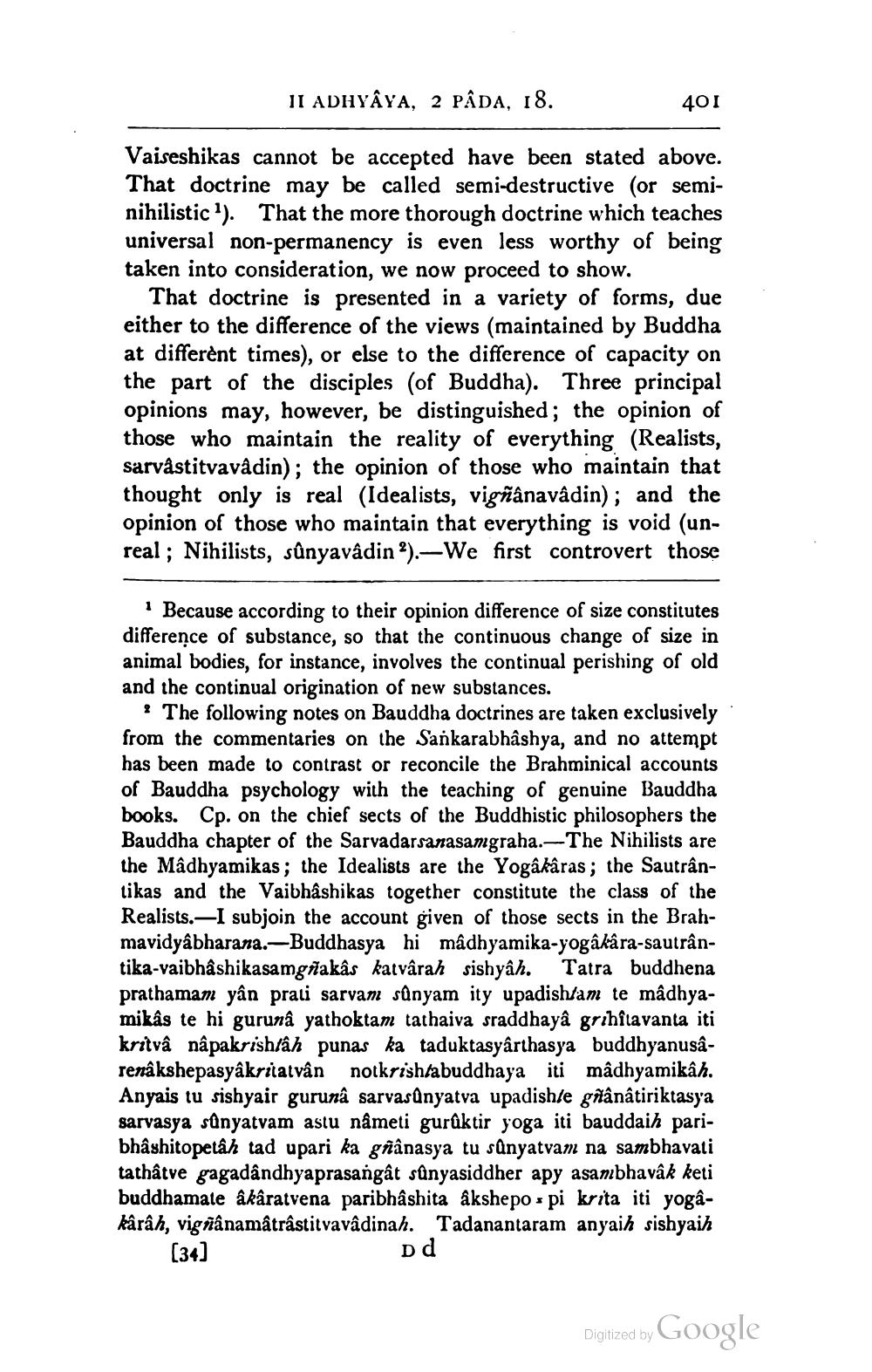________________
JI ADHYAYA, 2 PÂDA, 18.
401
Vaiseshikas cannot be accepted have been stated above. That doctrine may be called semi-destructive (or seminihilistic?). That the more thorough doctrine which teaches universal non-permanency is even less worthy of being taken into consideration, we now proceed to show.
That doctrine is presented in a variety of forms, due either to the difference of the views (maintained by Buddha at different times), or else to the difference of capacity on the part of the disciples of Buddha). Three principal opinions may, however, be distinguished; the opinion of those who maintain the reality of everything (Realists, sarvästitvavadin): the opinion of those who maintain that thought only is real (Idealists, vigñânavadin); and the opinion of those who maintain that everything is void (unreal; Nihilists, sûnyavadin).—We first controvert those
Because according to their opinion difference of size constitutes difference of substance, so that the continuous change of size in animal bodies, for instance, involves the continual perishing of old and the continual origination of new substances.
? The following notes on Bauddha doctrines are taken exclusively from the commentaries on the Sankarabhâshya, and no attempt has been made to contrast or reconcile the Brahminical accounts of Bauddha psychology with the teaching of genuine Bauddha books. Cp. on the chief sects of the Buddhistic philosophers the Bauddha chapter of the Sarvadarsanasamgraha.-The Nihilists are the Madhyamikas; the Idealists are the Yogâkâras; the Sautrântikas and the Vaibhâshikas together constitute the class of the Realists.-I subjoin the account given of those sects in the Brahmavidyabharana. -Buddhasya hi madhyamika-yogâkara-sautrântika-vaibhâshikasamgñakâs katvarah sishyâh. Tatra buddhena prathamam yân prati sarvam sünyam ity upadishtam te madhyamikâs te hi gurunâ yathoktam tathaiva sraddhayâ grihîlavanta iti kritvà nâpakrishlâh punas ka taduktasyârthasya buddhyanusârenâkshepasyâkrilatvân notkrishtabuddhaya iti mâdhyamikâh. Anyais tu sishyair gurunâ sarvasünyatva upadishte gåânâtiriktasya sarvasya sünyatvam astu nâmeti gurúktir yoga iti bauddaih paribhâshitopetâh tad upari ka gñanasya tu sunyatvam na sambhavati tathấtve gagadândhyaprasangât sûnyasiddher apy asambhavâk keti buddhamate âkâratvena paribhashita ákshepo s pi krita iti yogakârâh, vigñânamâtrâstitvavadinah. Tadanantaram anyaih sishyaih (34)
Dd
Digitized by
Digized by Google




